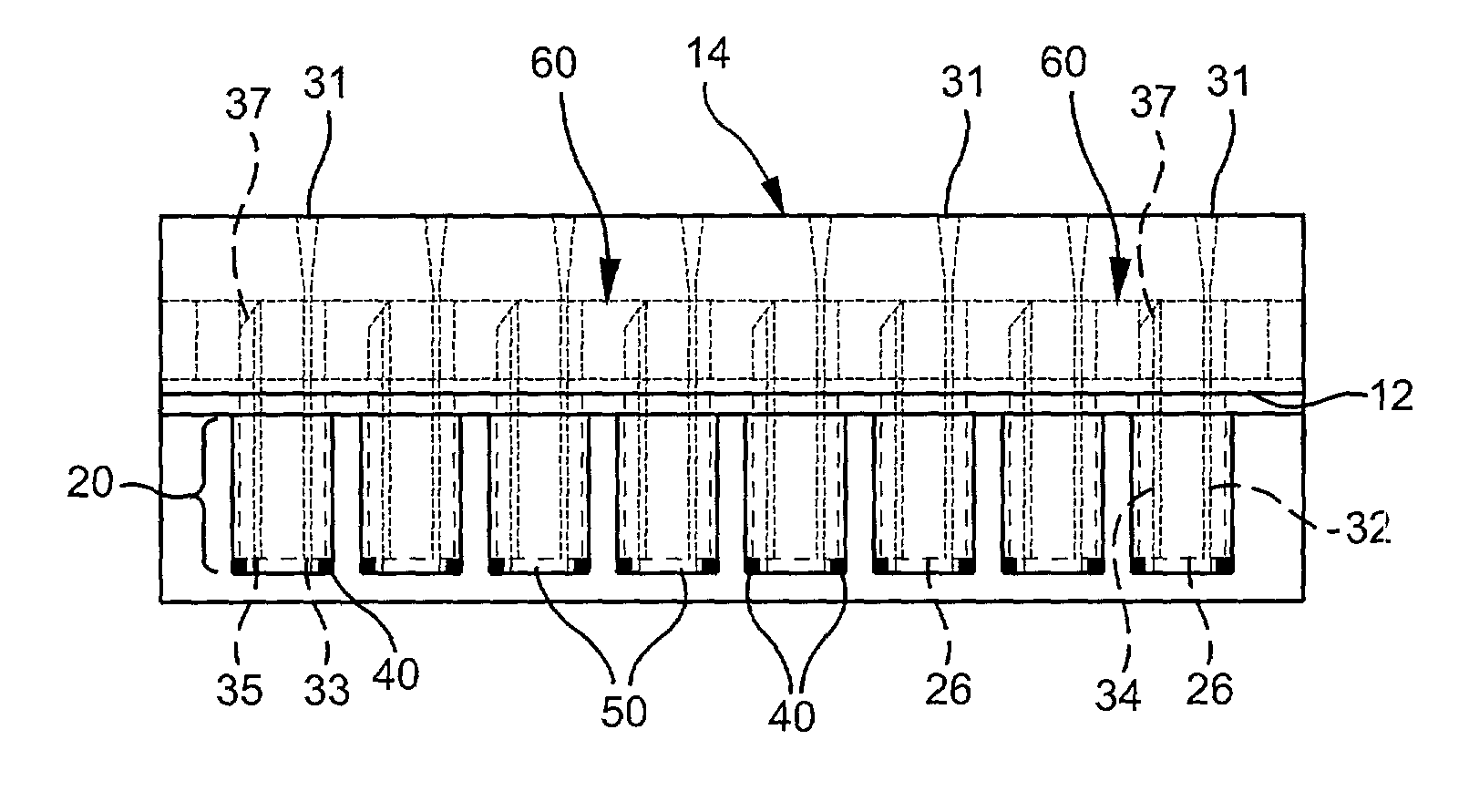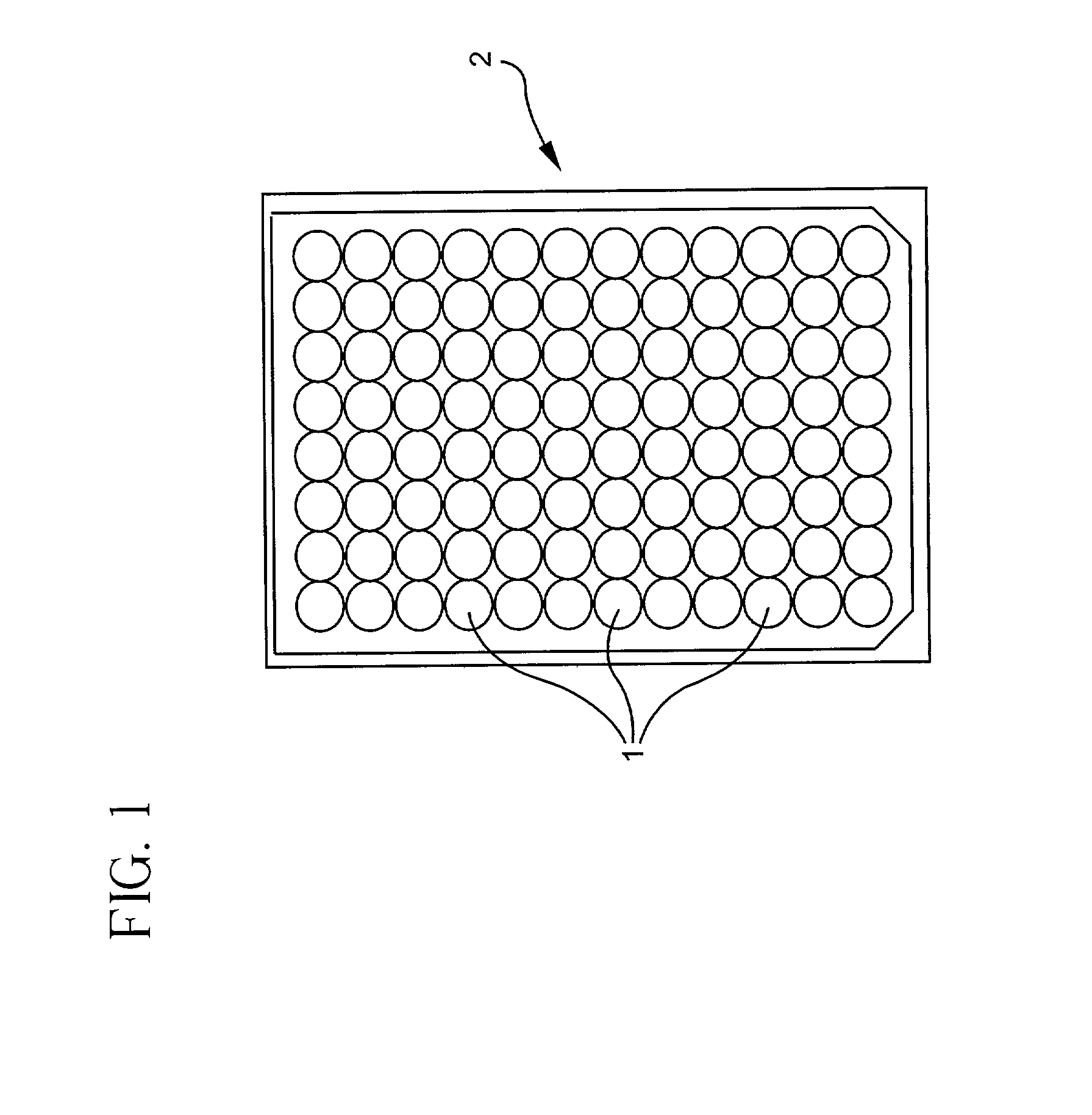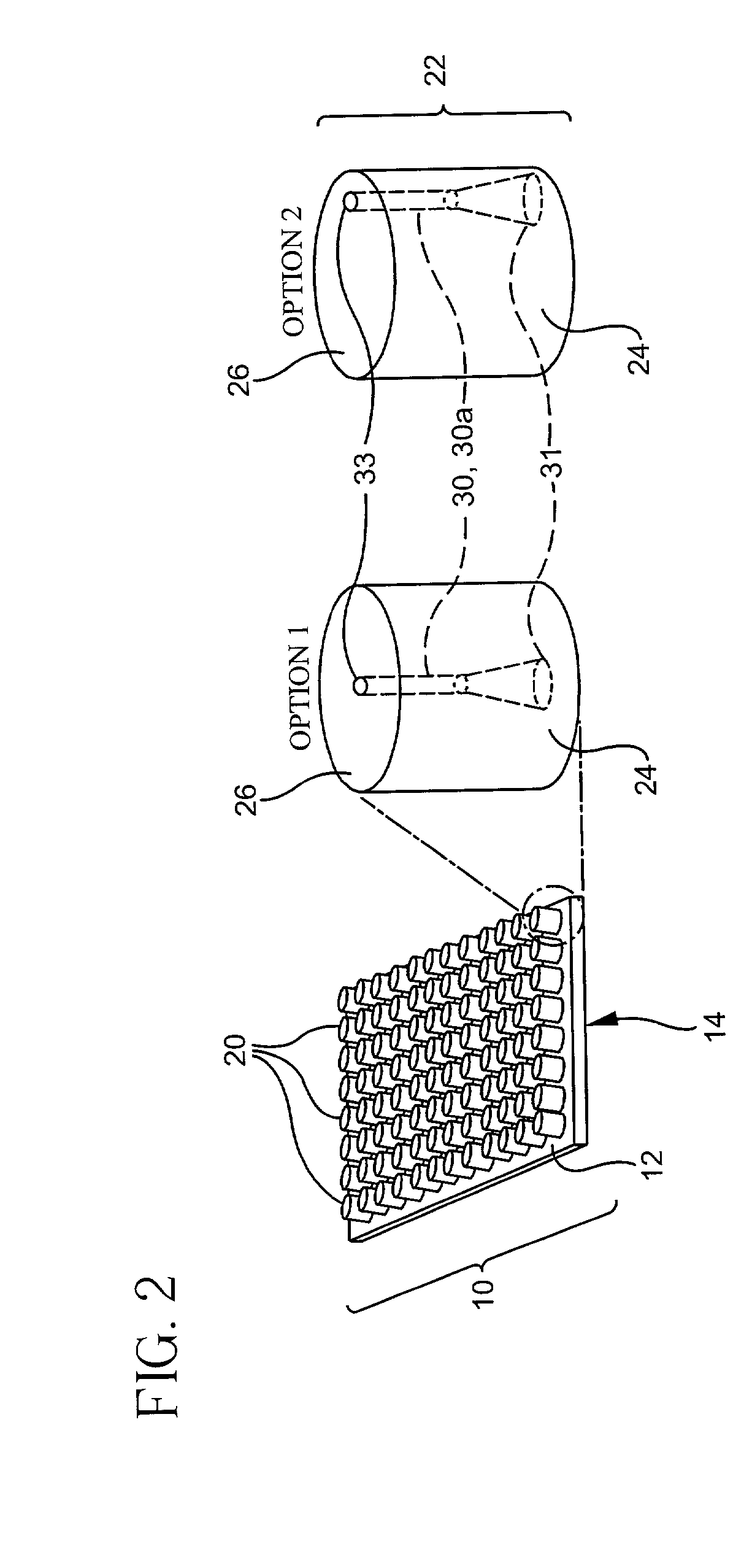Microcolumn-based, high-throughput microfluidic device
a microfluidic device and microcolumn technology, applied in the field of high-throughput biological assay devices, can solve the problems of reducing the flexibility and cost advantages of microfluidic systems, limiting the use of test substrates, and most current lab-on-chip devices
- Summary
- Abstract
- Description
- Claims
- Application Information
AI Technical Summary
Benefits of technology
Problems solved by technology
Method used
Image
Examples
Embodiment Construction
[0035]The current gold standard in high-throughput, bio-chemical assay devices is the 96-well microplate as illustrated in FIG. 1. Conventional technologies used to miniaturize assay volumes in multi-well microplates have met with a range of problems associated principally with evaporation. Also, conventional microplates often give imprecise test results due to poorly controlled fluidic mixing. Efforts to solve the evaporation and poor mixing problems within a 96-well plate have led others to modify the basic 96-well-plate footprint by integrating capillaries (e.g., International Patent Application No. WO 00 / 67907; Arteas™ microfluidic devices by Aclara Biosciences, Inc.), and / or additional wells into the plate. Hydrostatic and surface tension forces drive fluid from an evaporation control well through a microfluidic channel to an assay well. The function of these capillaries and additional wells in the plate is either to eliminate the negative effects of evaporation by compensating...
PUM
| Property | Measurement | Unit |
|---|---|---|
| Flow rate | aaaaa | aaaaa |
| Distance | aaaaa | aaaaa |
Abstract
Description
Claims
Application Information
 Login to View More
Login to View More - R&D
- Intellectual Property
- Life Sciences
- Materials
- Tech Scout
- Unparalleled Data Quality
- Higher Quality Content
- 60% Fewer Hallucinations
Browse by: Latest US Patents, China's latest patents, Technical Efficacy Thesaurus, Application Domain, Technology Topic, Popular Technical Reports.
© 2025 PatSnap. All rights reserved.Legal|Privacy policy|Modern Slavery Act Transparency Statement|Sitemap|About US| Contact US: help@patsnap.com



